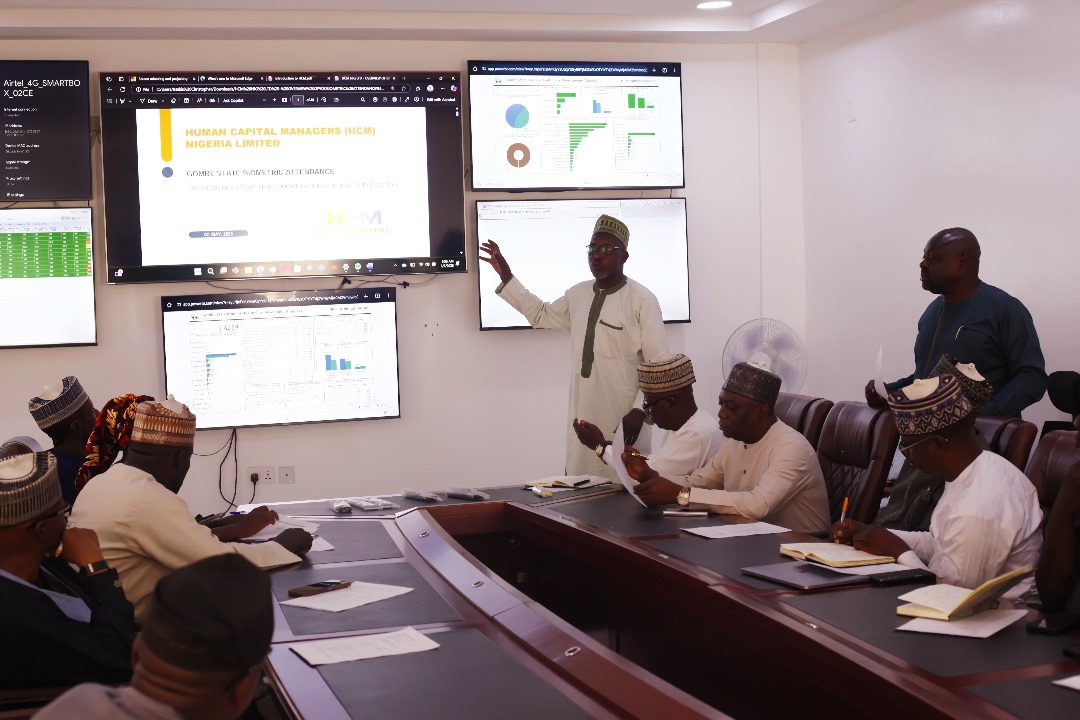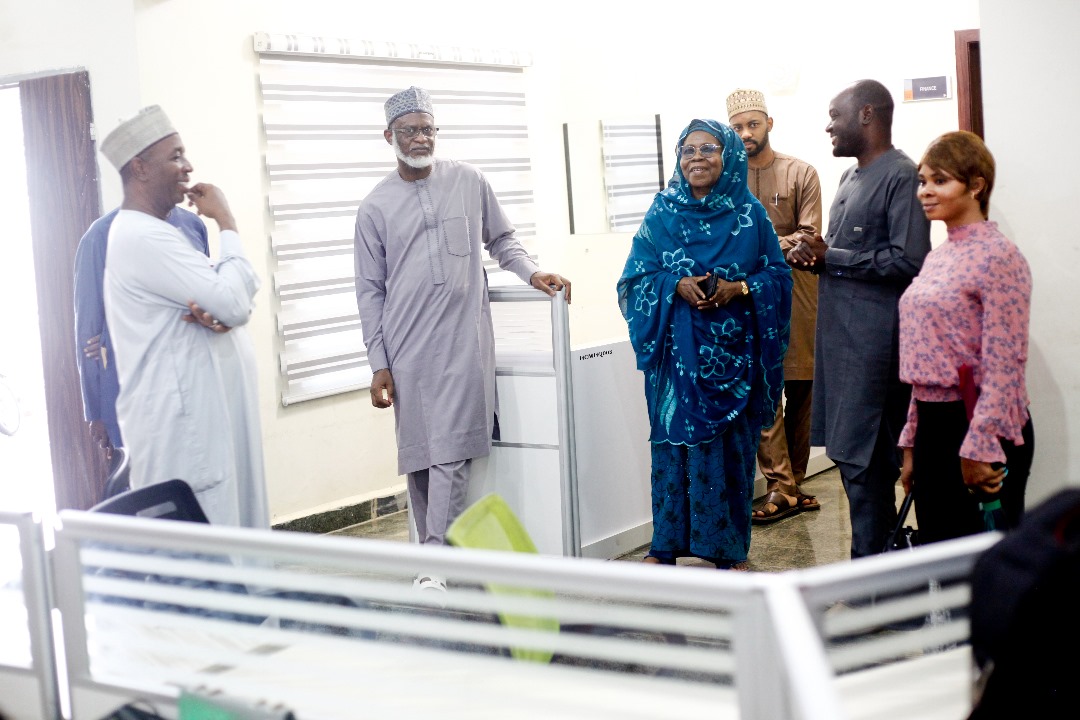Gombe’s HR-Tech Leadership Sparks Regional Collaboration: Adamawa State Explores HCM-Powered Biometric Success
Gombe State’s leadership in digital public health reform continues to attract national recognition. Most recently, the Adamawa State Primary Health Care Development Agency (ASPHCDA) conducted a high-level study visit to the Gombe State Primary Health Care Development Agency (GSPHCDA) to explore the digital workforce solutions powering Gombe’s widely praised primary healthcare transformation.
The visit led by ASPHCDA Executive Chairman Dr. Sulaiman Saidu Bashir focused on the state’s adoption of biometric attendance systems and Human Resources for Health (HRH) data-driven management, deployed in partnership with Human Capital Managers (HCM). These reforms have been instrumental in reducing staff absenteeism, improving accountability, and enhancing the quality of healthcare services delivered to communities across the state.
A Model Worth Studying: Technology, Transparency, and Results
During the visit, the Adamawa delegation participated in detailed technical sessions and live field demonstrations showcasing how Gombe’s human resource architecture is being redefined through innovation.
The delegation was taken through key components of the reform process, including:
- Biometric registration and daily attendance tracking
- Real-time HRH dashboard analytics showing staff deployment, facility postings, and absenteeism trends
- Integration of productivity metrics into attendance system using HCM’s healthcare solution
- Seamless coordination with the State Treasury to ensure transparent, timely salary disbursements
These digital innovations are not just about efficiency. They’ve enabled Gombe to redirect resources where they’re needed most, filling service gaps and boosting staff motivation across the healthcare sector.
Seeing the Future in Action: HRH Dashboard in Focus
A highlight of the tour was a live demonstration of the HRH performance dashboard, an intuitive, centralized platform built to provide decision-makers with full visibility into health workforce dynamics.
The dashboard displays:
- Cadre distribution by location
- Attendance logs and real-time absentee alerts
- Facility-level staffing gaps
- Trends in workforce productivity and compliance
By leveraging this data, Gombe’s health authorities are now able to make evidence-based decisions about recruitment, deployment, and retention, leading to more equitable and responsive health care coverage across the state.
Leadership Reactions: Gombe as a Replicable Model
Visibly impressed, Dr. Bashir commended Gombe’s success and highlighted the potential for broader adoption across states:
“Gombe is a shining example of what is possible when technology is harnessed in the service of people. The systems we’ve seen here are structured, scalable, and ready for replication, and the insights from this visit will certainly inform our own reform roadmap in Adamawa.”
The Executive Secretary of GSPHCDA, Dr. Abdulrahman Shuaibu, echoed this sentiment, emphasizing the state’s readiness to support peer learning:
“We are pleased that our investment in health system efficiency is yielding not only local impact but also inspiring progress beyond our borders. When leadership prioritizes accountability and partners with the right technology providers, better outcomes naturally follow.”
HCM’s Commitment to Transformative, Scalable Public Sector Solutions
As the technical partner powering Gombe’s digital workforce transformation, HCM remains committed to helping state institutions modernize how they manage, motivate, and monitor their most valuable asset: people.
“At HCM, we don’t just deploy technology, we partner with governments to design systems that solve real problems,” said an HCM Communications Officer. “This visit reinforces the value of our approach: practical innovation, measurable impact, and shared progress.”
A Growing Movement for Digital Governance
The visit concluded with renewed commitments from both states to deepen collaboration, explore knowledge exchange, and expand the use of digital tools in public sector management.
For HCM, it’s a strong affirmation that technology, when aligned with visionary leadership, becomes a catalyst for sustainable, system-wide reform




